In the Weeds: Herbaceous/Grasses

Invasive herbaceous and grass plants like the Common Reed above can quickly take over vegetated stormwater systems and alter their functioning. Click on the plant names below to open a dropdown with images and more information about each of these successful GI invaders.
Common Reed
Phragmites australis
Invasive
This wetland grass, which can reach a height of fifteen feet, is often found in large monocultures. It is green during growing season and gold through the winter. Common reed, often called Phragmites (frag-MY-teez), is found in both freshwater wetland and salt-marsh habitats. A native look-alike is the rare Phragmites americanus, on which middle and upper stems appear reddish.
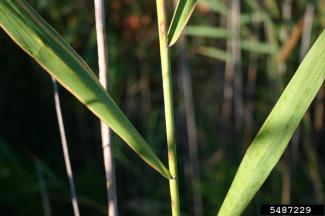
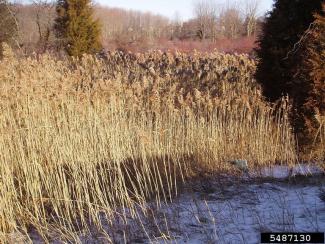

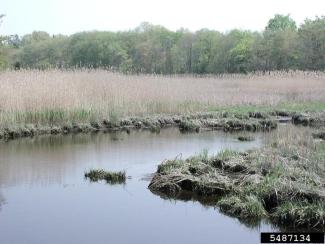

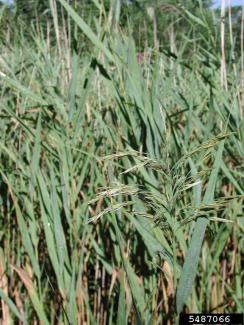
Photo credit: Leslie J. Mehrhoff, University of Connecticut, Bugwood.org.
Drooping Brome Grass
Bromus tectorum
Invasive
This grass usually grows 1-3 feet tall and is found on dry, sunny sites. The central stalk and lateral branches tend to droop. Immature florets are whitish or reddish and shiny (see first image below).
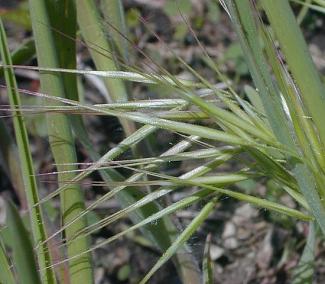

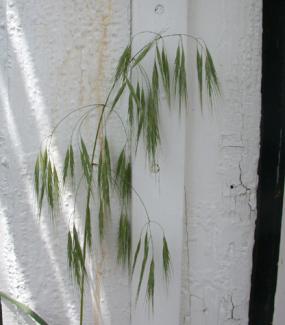

Photo credit: (First, second) John Hilty, Illinois Wildflowers, (third, fourth) Randall G. Prostak, University of Massachusetts Extension.
Garlic Mustard
Alliaria petiolata
Invasive
Found in shady areas, this plant has a two-year life cycle. In the first year, leaves are round and grow in rosettes (first image). In its second year of life garlic mustard grows 1-4 feet tall with toothed leaves that are triangular in shape and clusters of white flowers (second image).
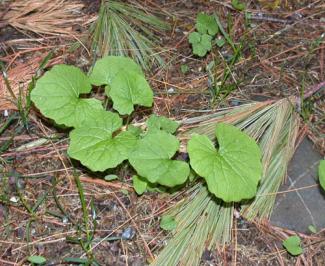

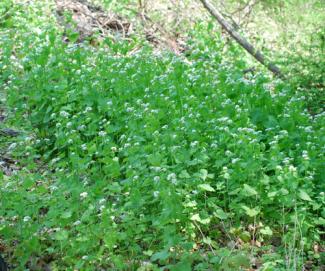
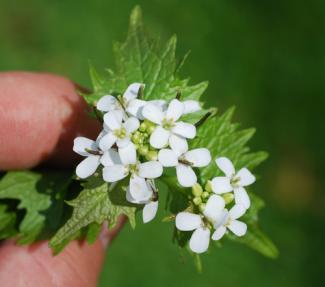

Photo credit: Randall G. Prostak, University of Massachusetts Extension.
Conyza canadensis
Native and weedy
Horseweed can be beneficial to native insects and will not affect functioning of stormwater system. But it is very common, successful, and may impact aesthetics. Leaves are narrow, hairy and whorled. Horseweed grows 3-6 feet tall and is largely unbranched.
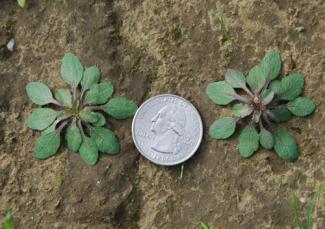
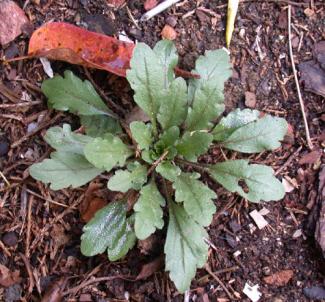
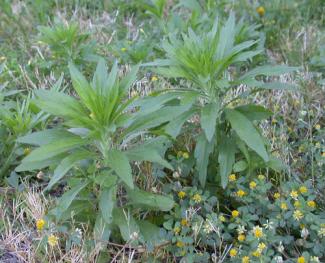
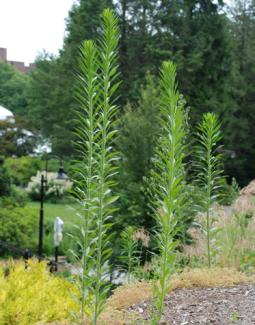
Photo credit: Randall G. Prostak, University of Massachusetts Extension.
Polygonum cuspidatum/Fallopia japonica
Invasive
This tenacious invasive forms monocultures in moist, well-drained soil and can grow up to 10 feet tall. Japanese knotweed has a bamboo-like appearance, with distinctive red and green stems. It has numerous upright clusters of small white flowers which develop into winged fruits.

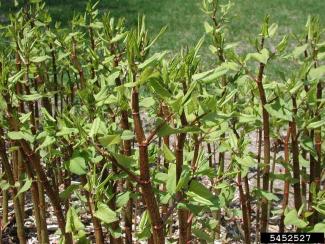

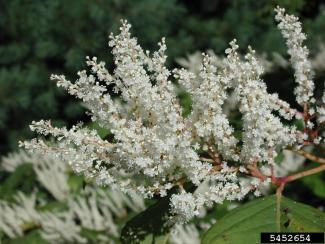

Photo credit: (First, second, fourth, fifth) Leslie J. Mehrhoff, University of Connecticut, Bugwood.org, (third) Nisa Karimi, Wisconsin Department of Natural Resources, Bugwood.org.
Japanese Stiltgrass
Microstegium vimenium
Invasive
Found in shady areas near wetlands and streams, Japanese Stiltgrass grows 1-3 feet tall. Identify by observing fine hairs where the leaf sheath meets the stem as in first image below. Tell apart from native Whitegrass when Stiltgrass stems turn red in mid-autumn and mid-vein appears iridescent. DON’T SPREAD IT: Japanese stiltgrass has tiny seeds that stick to shoes, tools, and especially equipment tires.

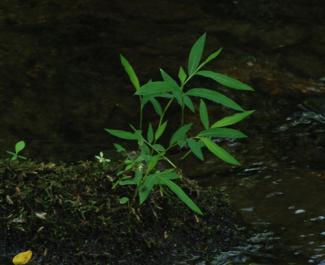

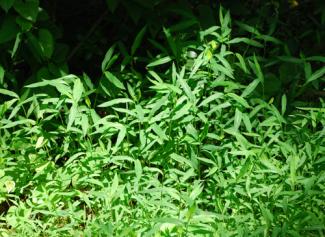
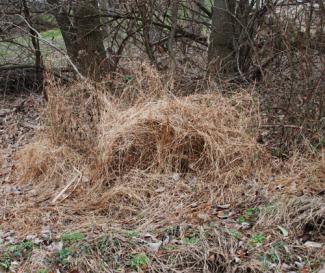
Photo credit: (First) © Arthur Haines, New England Wild Flower Society, (second, third, fourth, fifth, sixth) Randall G. Prostak, University of Massachusetts Extension.
Knapweeds
Centaurea spp.
Invasive
Found in full sun and poor soils. The knapweeds are generally 2-3 feet tall and are topped by pink-to-purple flower heads with slim spreading petals. Root system includes a taproot.
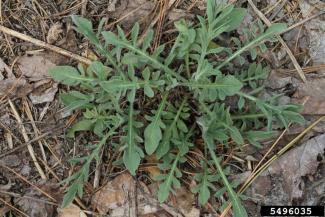
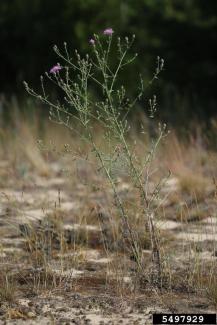
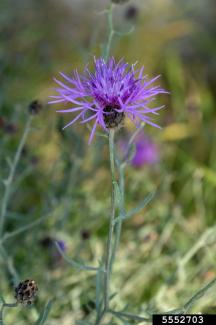
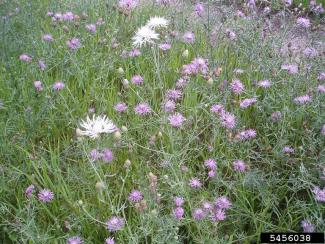
Photo credit: (First, second) Rob Routledge, Sault College, Bugwood.org, (third) William M. Ciesla, Forest Health Management International, Bugwood.org, (fourth) Leslie J. Mehrhoff, University of Connecticut, Bugwood.org.
Lesser Celandine
Ficaria verna
Invasive
Found in shady areas near water. Lesser celandine has shiny, dark green leaves and glossy yellow flowers. It grows, blooms and reproduces all during the spring—it is dormant throughout the summer. Tell this invasive apart from native Marsh-marigold because Lesser Celandine has tuberous roots (see fourth image below).
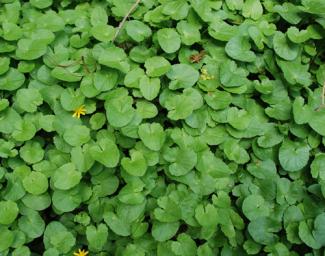
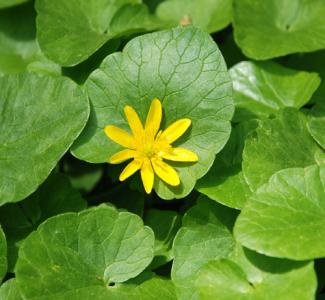
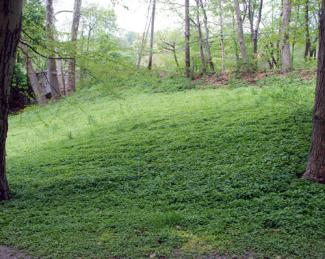
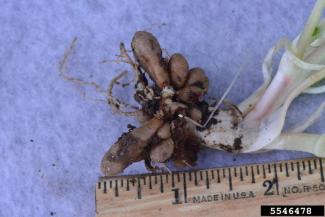
Photo credit: (First, second, third) Randall G. Prostak, University of Massachusetts Extension, (fourth) David L. Clement, University of Maryland, Bugwood.org.
Moneywort
Lysimachia nummularia
Invasive
This herbaceous vine grows across the ground instead of climbing. Stems are light green and angular and leaves are opposite. Yellow flowers usually have five petals but will occasionally form six.
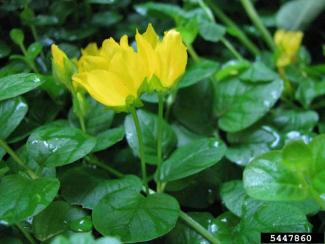
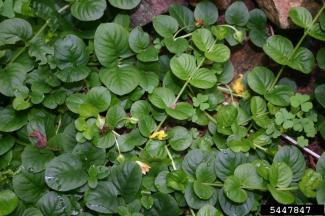
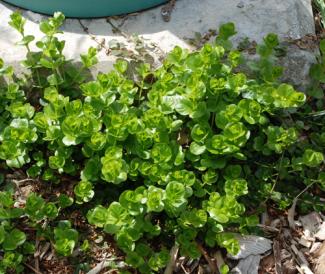
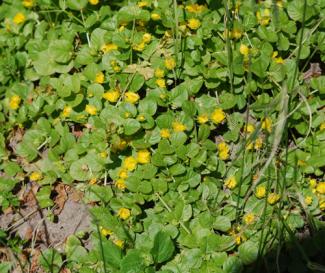
Photo credit: (First) Leslie J. Mehrhoff, University of Connecticut, Bugwood.org, (second, third, fourth) Randall G. Prostak, University of Massachusetts Extension.
Mugwort/Chrysanthemum Weed
Artemisia vulgaris
Invasive
Highly invasive. Leaves have a strong smell similar to chrysanthemum. Leaves are silvery on their underside and deeply lobed. Mugwort has small white flowers and can grow up to 4 feet tall. It is usually found growing in groups and is very difficult to pull up by hand.
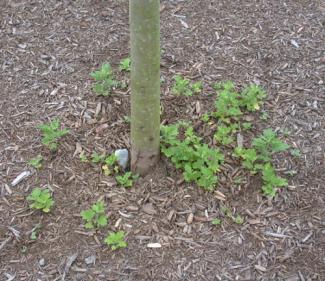
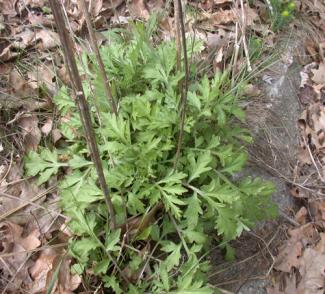
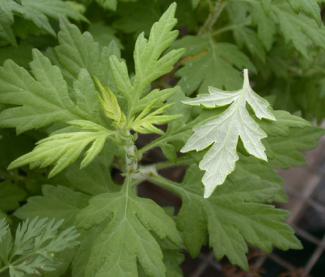
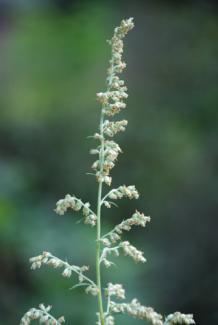
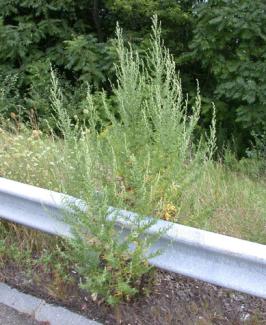
Photo credit: (First, second, third, fourth, fifth) Randall G. Prostak, University of Massachusetts Extension, (sixth) Alicyn Murphy, URI CE.
Pokeweed
Phytolacca americana
Native and weedy
This native plant has reddish stems and a tree-like shape and grows 3-8 feet tall. Has light flowers, clusters of berries that turn dark purple when ripe, and a fleshy taproot. Leaves are alternate.
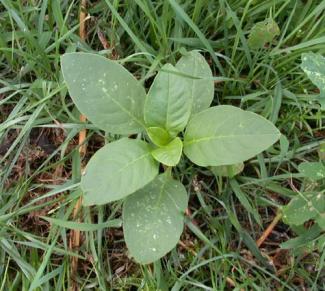
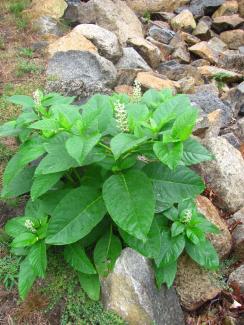
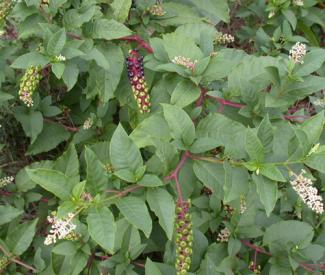
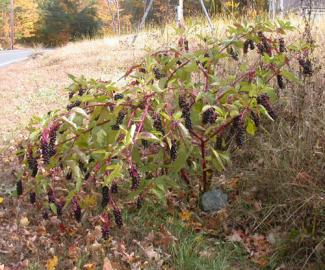

Photo credit: (First) Alicyn Murphy, URI CE, (second, third, fourth, fifth, sixth) Randall G. Prostak, University of Massachusetts Extension.
Purple Loosestrife
Lythrum salicaria
Invasive
Purple loosestrife has persistent purple flowers and is found in sunny wetlands. Leaves can appear alternate, opposite, or whorled (see fourth image below). Averages five feet tall. The native plant narrow-leaved fireweed has four-petal flowers while purple loosestrife has six-petal flowers. DON’T SPREAD IT: Purple loosestrife have tiny seeds that stick to shoes, tools, and especially equipment tires.
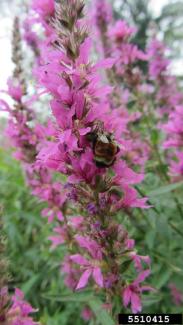
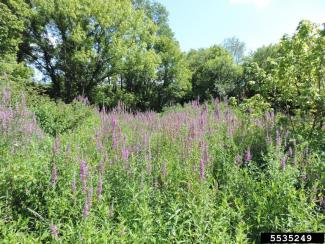

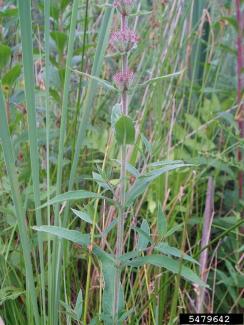
Photo credit: (First) Caleb Slemmons, National Ecological Observatory Network, Bugwood.org, (second) Richard Gardner, UMES, Bugwood.org, (third, fourth) Leslie J. Mehrhoff, University of Connecticut, Bugwood.org.
Reed Canary Grass
Phalaris arundinacea
Invasive
This hairless grass is found growing in dense clumps. The flowering heads are up to 10 inches long and are tan when mature (see below). The best way to tell reed canary grass apart from native grasses is that it exceeds 4-and-a-half feet tall.
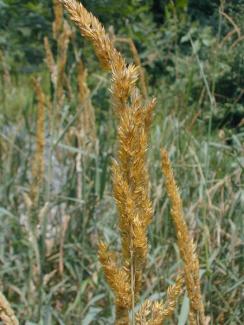


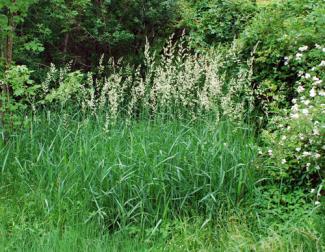
Photo credit: (First) John Hilty, Illinois Wildflowers, (second, third, fourth) Randall G. Prostak, University of Massachusetts Extension.
Smartweed
Persicaria maculosa
Invasive
Smartweed reaches 1-4 feet tall. A purplish thumbprint shape sometimes marks the leaf (see third image below). Stems are reddish. Found in a range of soil types.

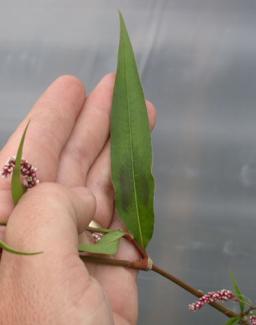

Photo credit: (First) Alicyn Murphy, URI CE, (second, third, fourth) Randall G. Prostak, University of Massachusetts Extension.
Description for Common Reed, Japanese Stiltgrass, Purple Loosestrife obtained from New England Wild Flower Society. www.newenglandwild.org & www.gobotany.newenglandwild.org/
Description for Drooping Brome Grass, Knapweeds, Moneywort, and Reed Canary Grass referenced from http://www.illinoiswildflowers.info/
Description for Garlic Mustard, Horseweed, Japanese Knotweed, Lesser Celandine, Pokeweed, and Smartweed referenced from https://extension.umd.edu/hgic
